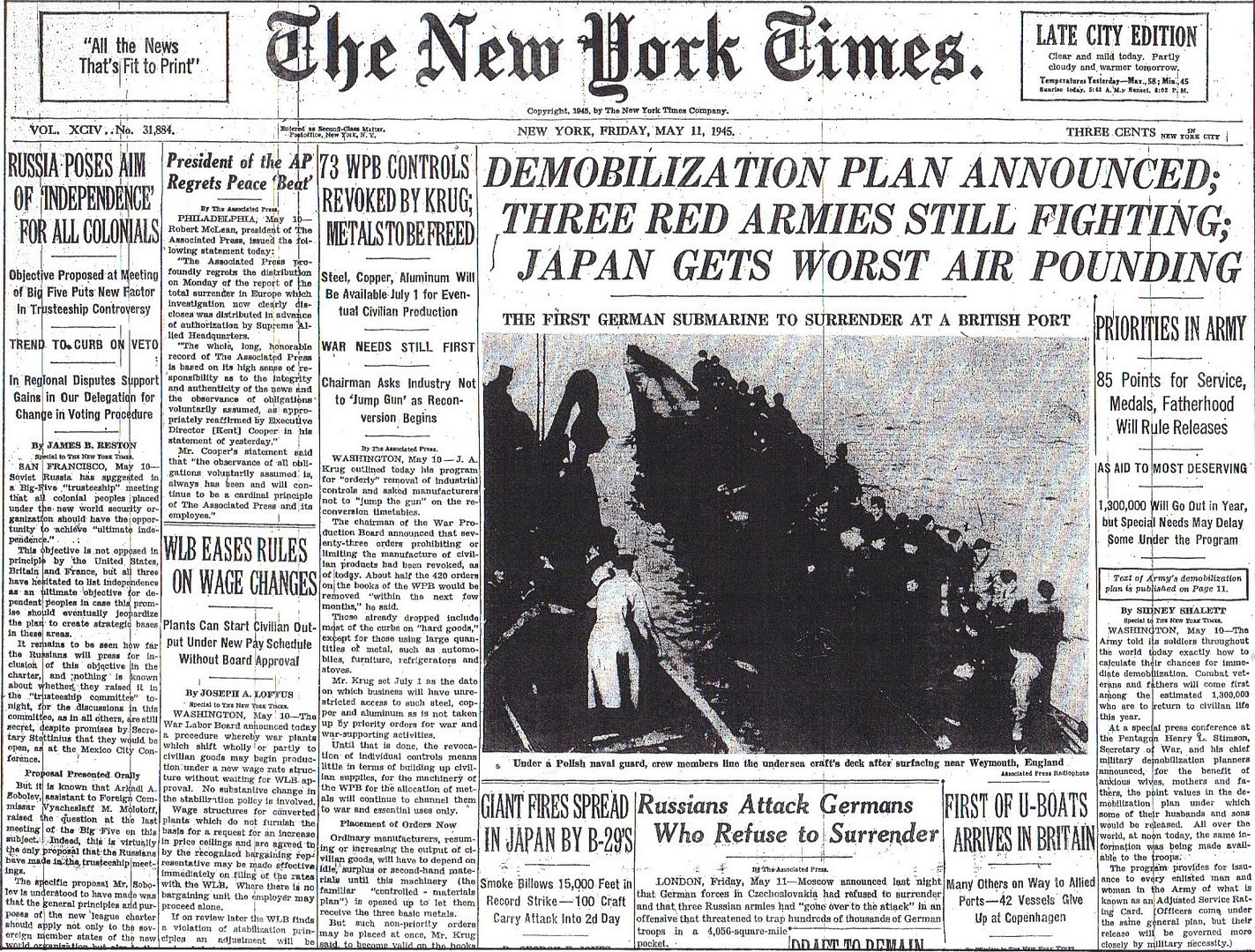
Posted on 05/11/2015 4:12:22 AM PDT by Homer_J_Simpson

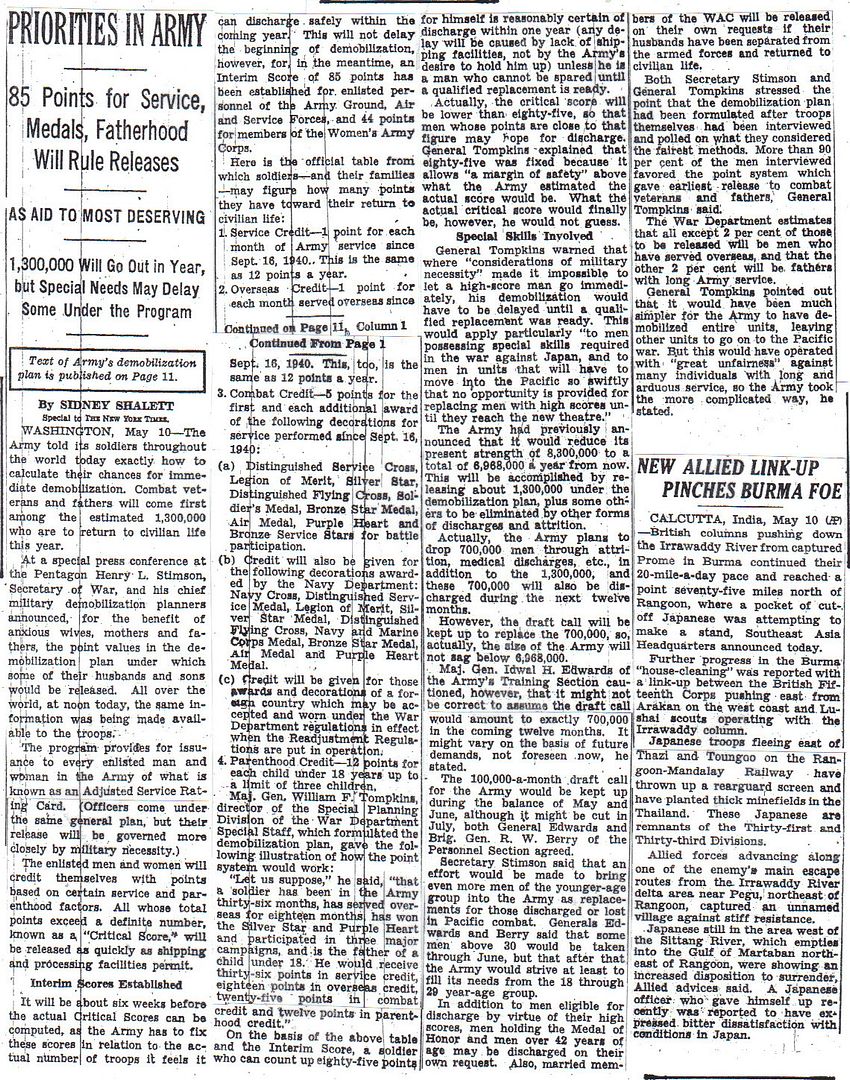
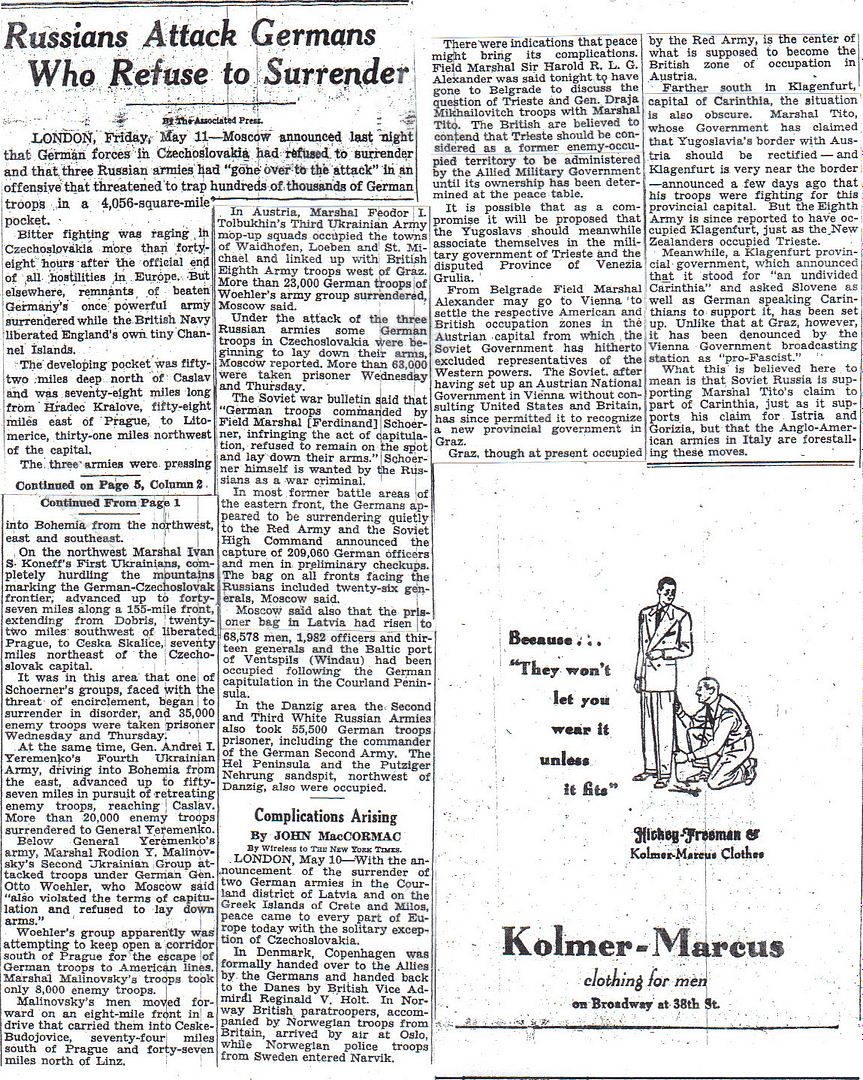
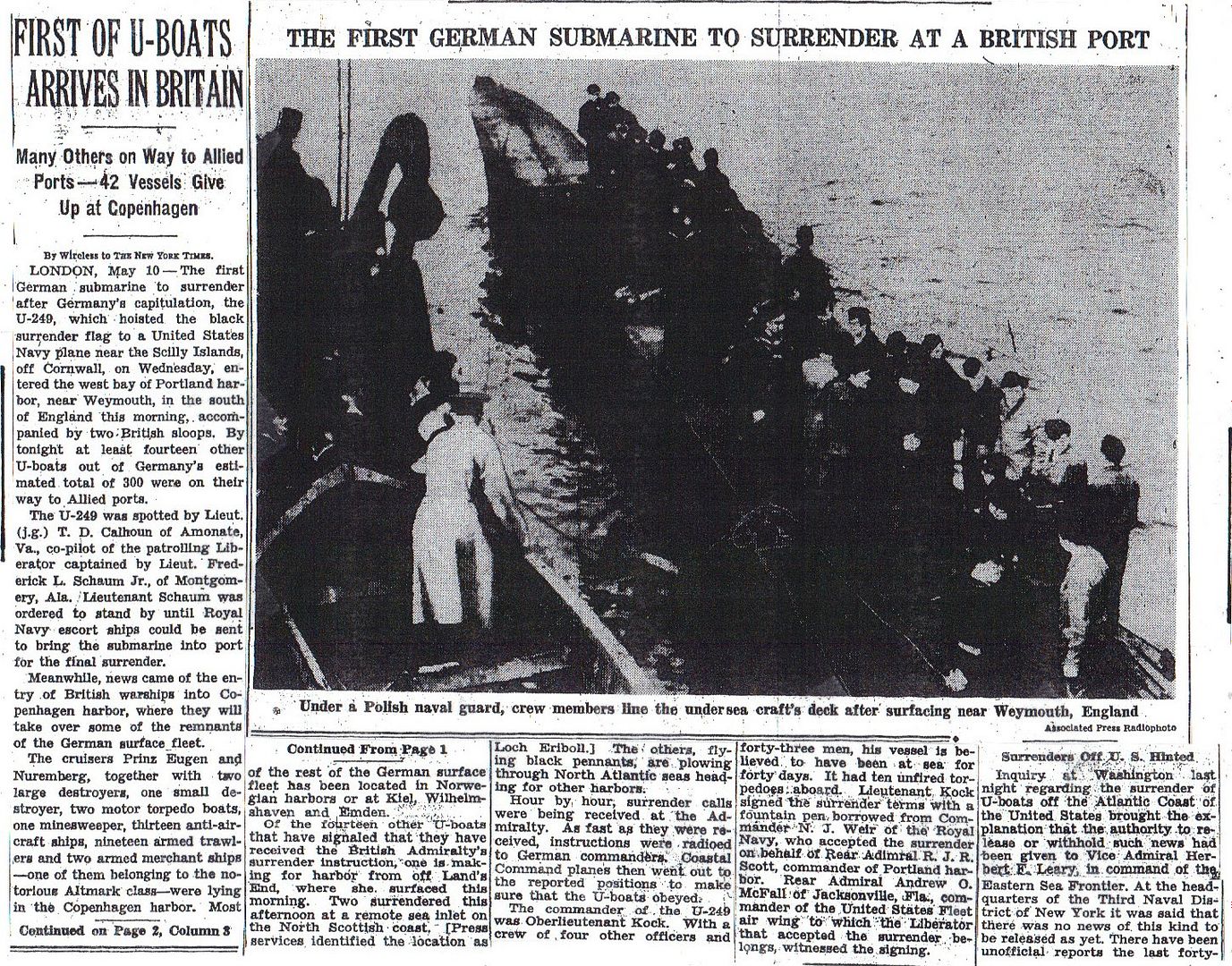

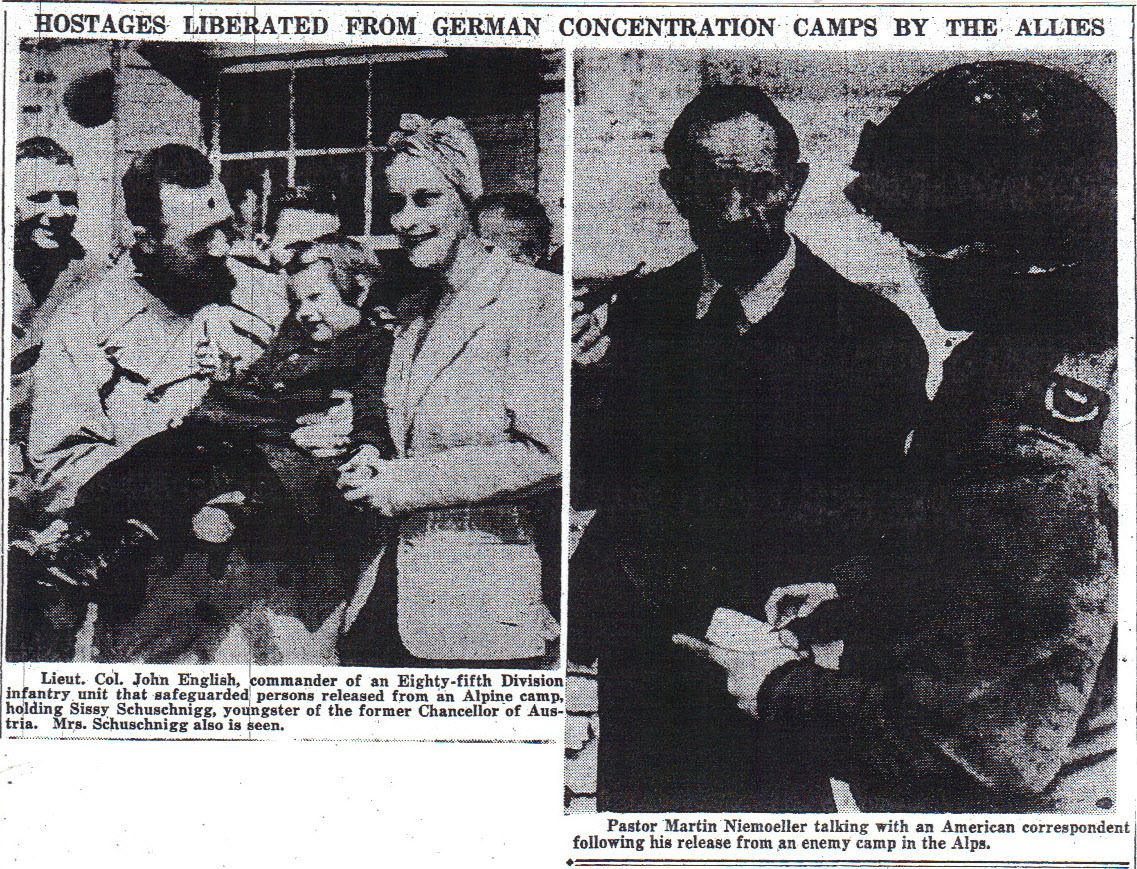
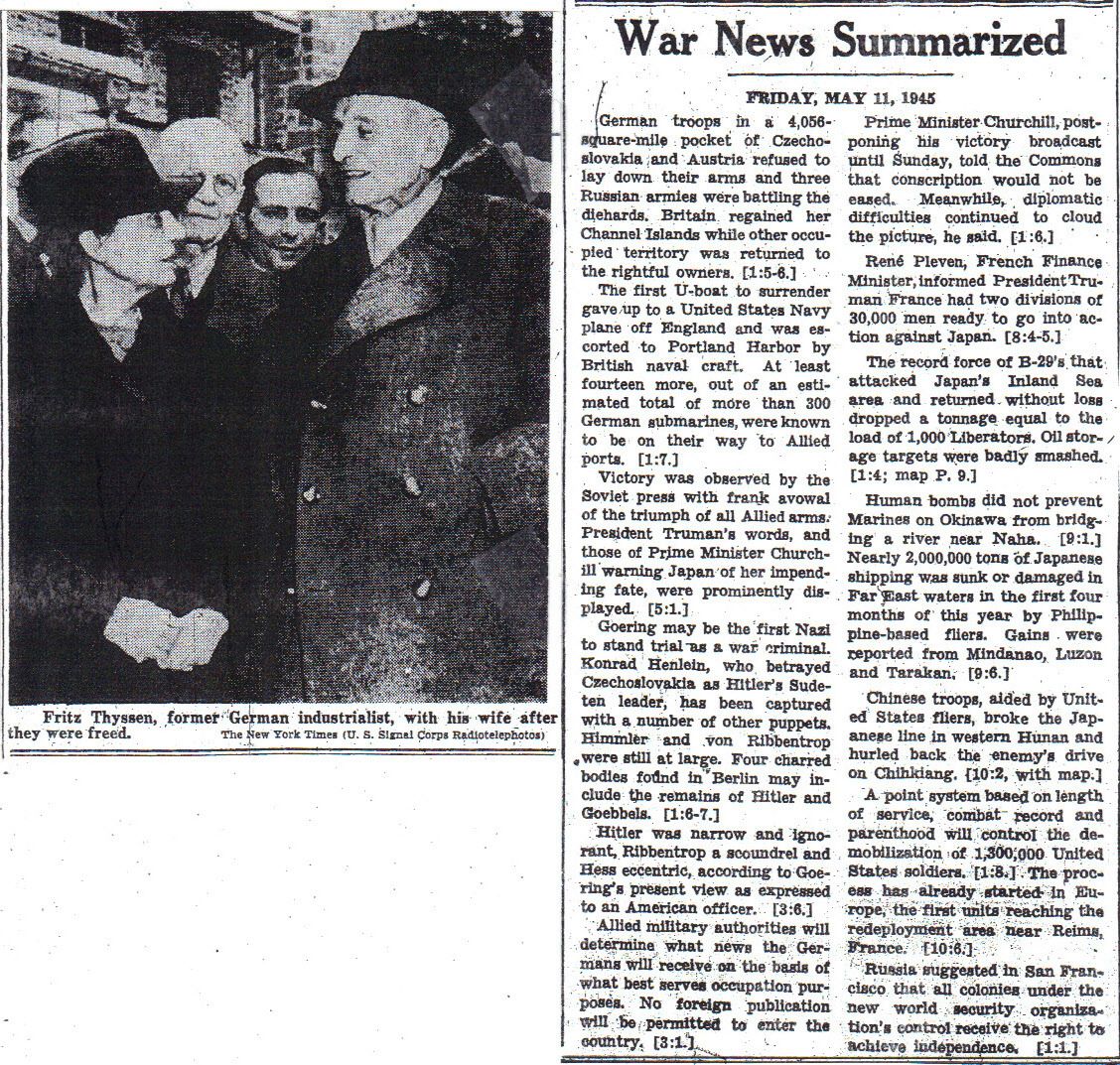
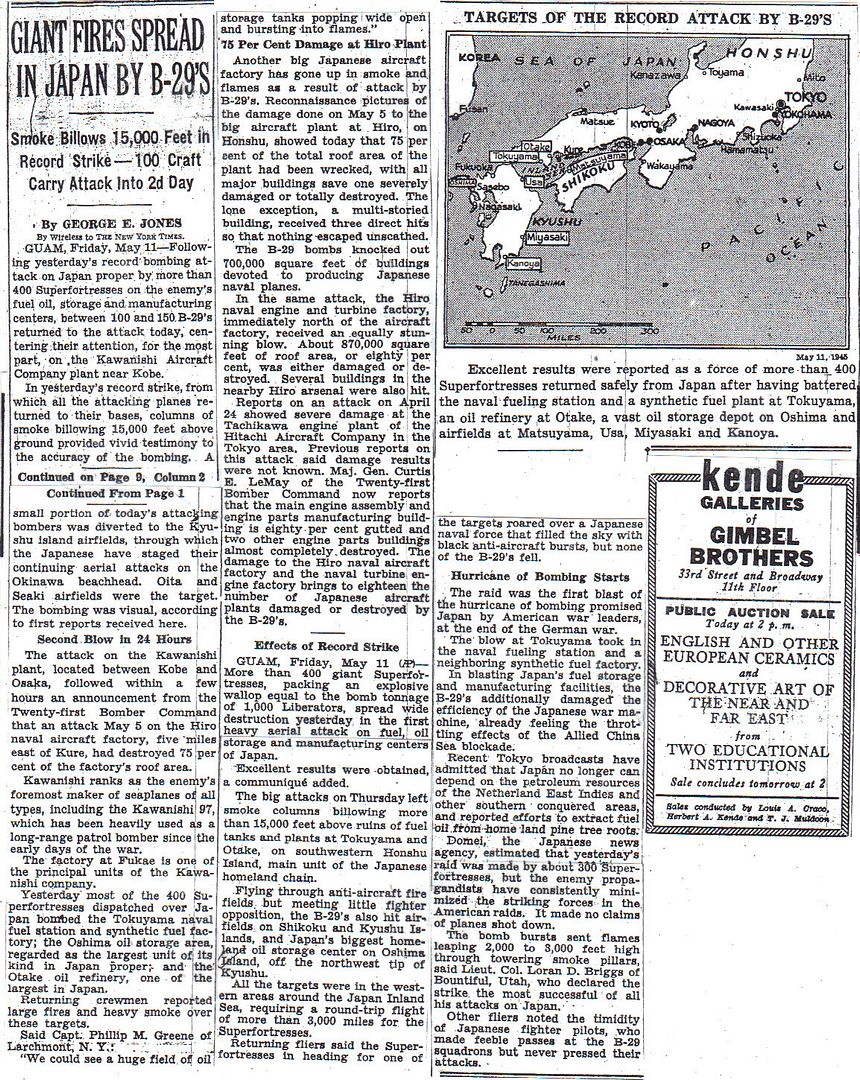
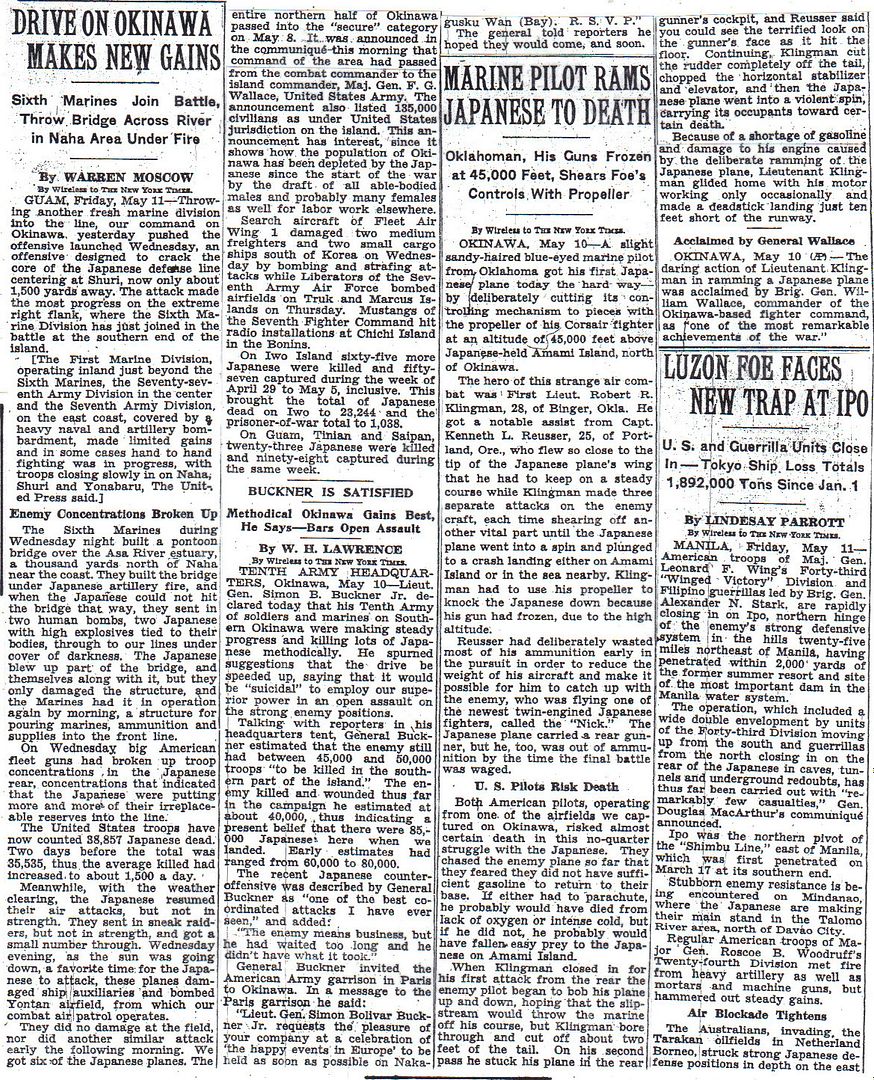
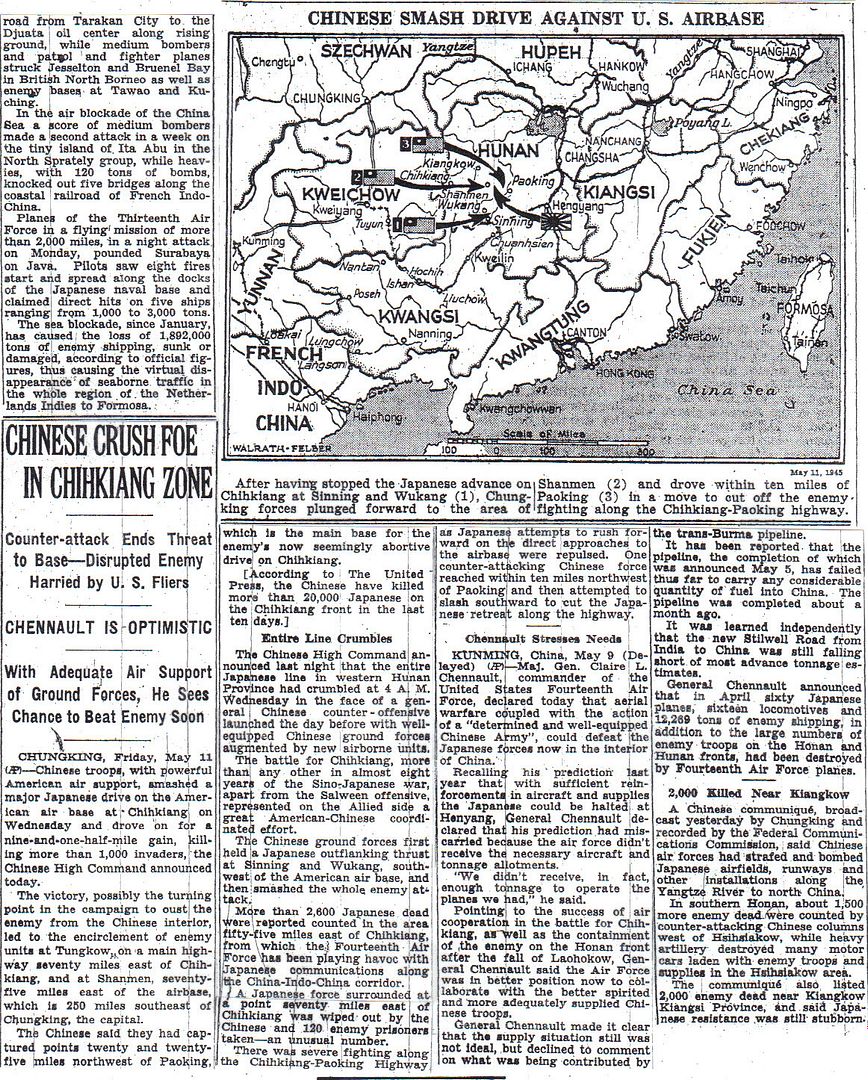
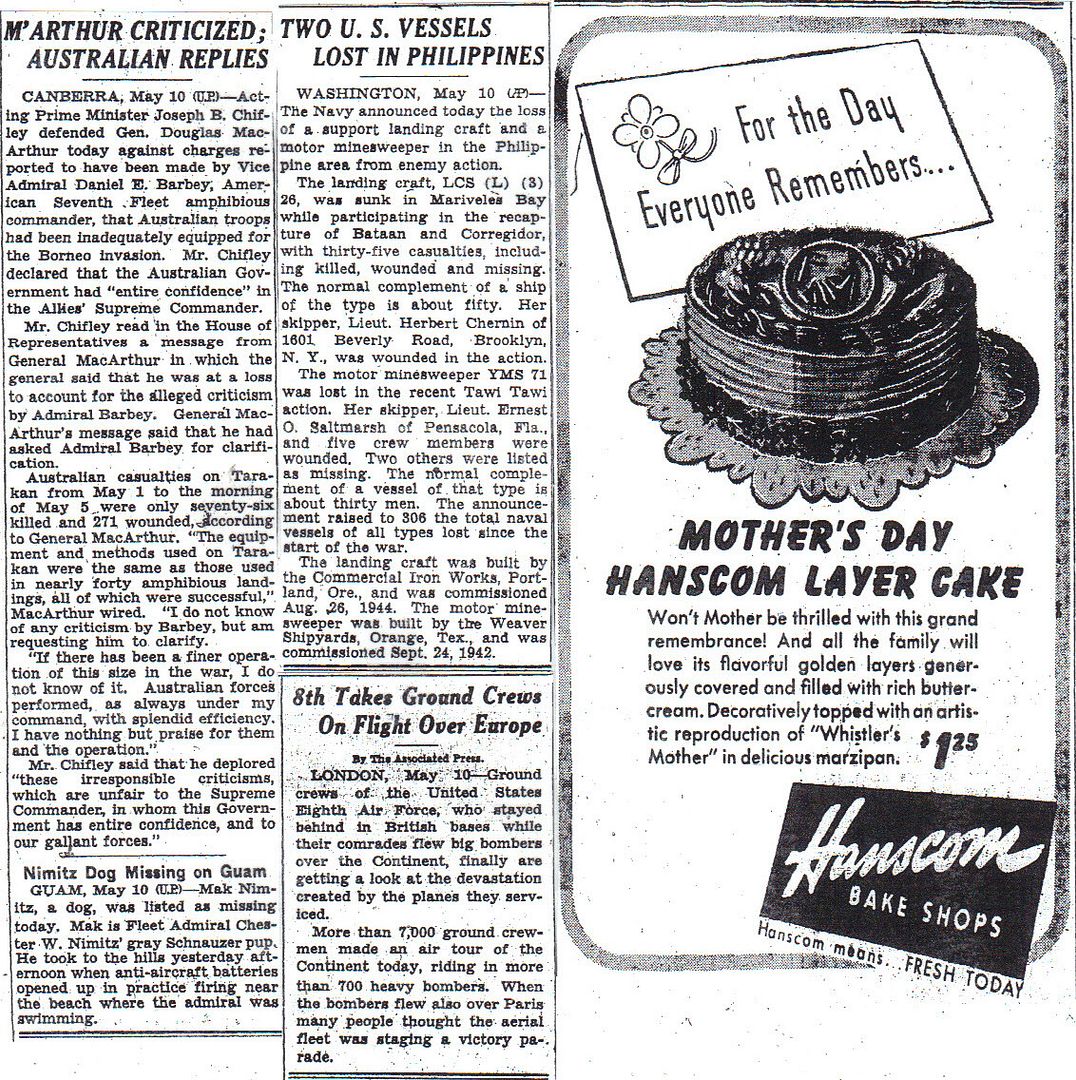
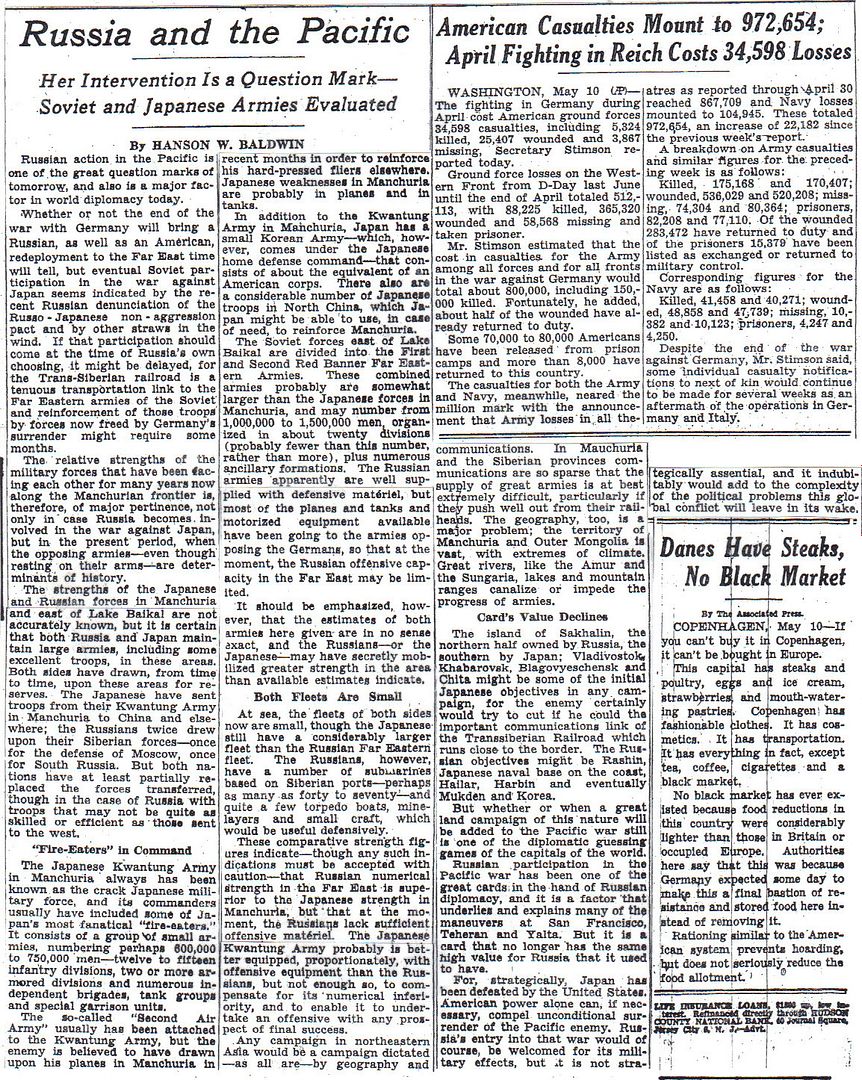

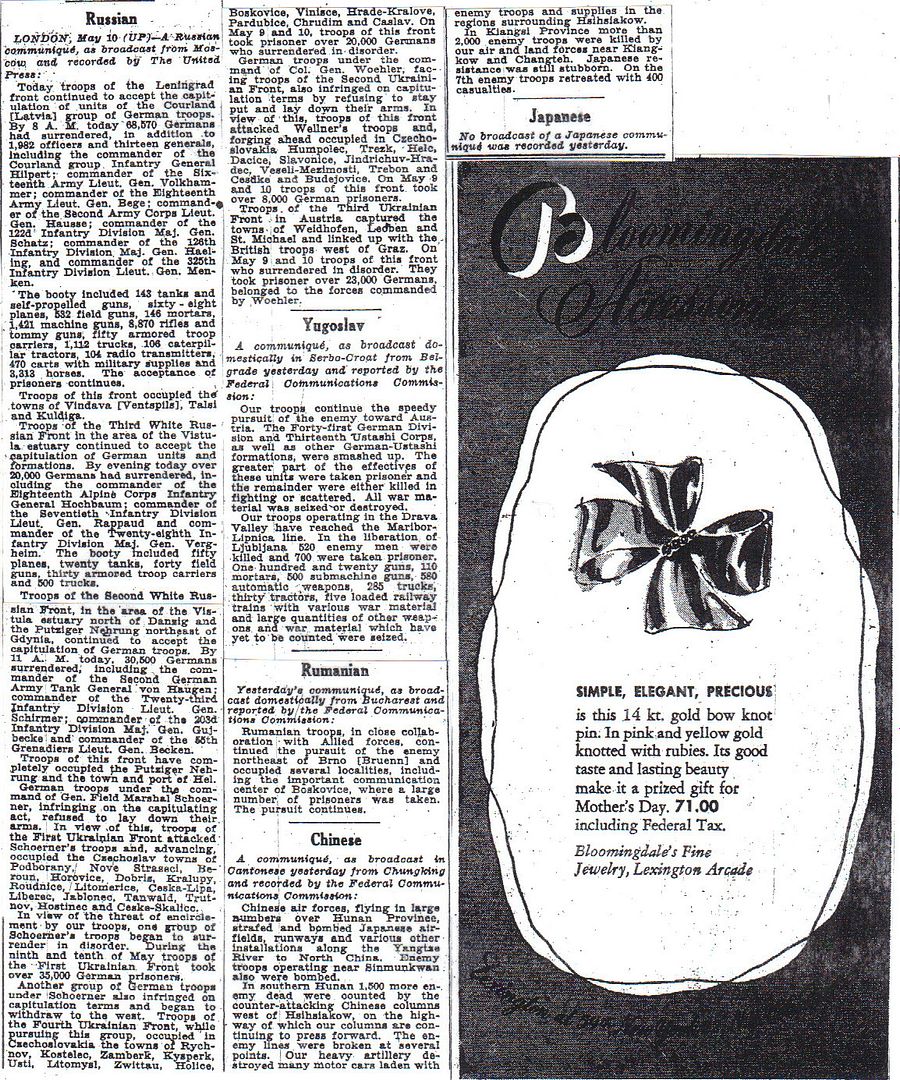
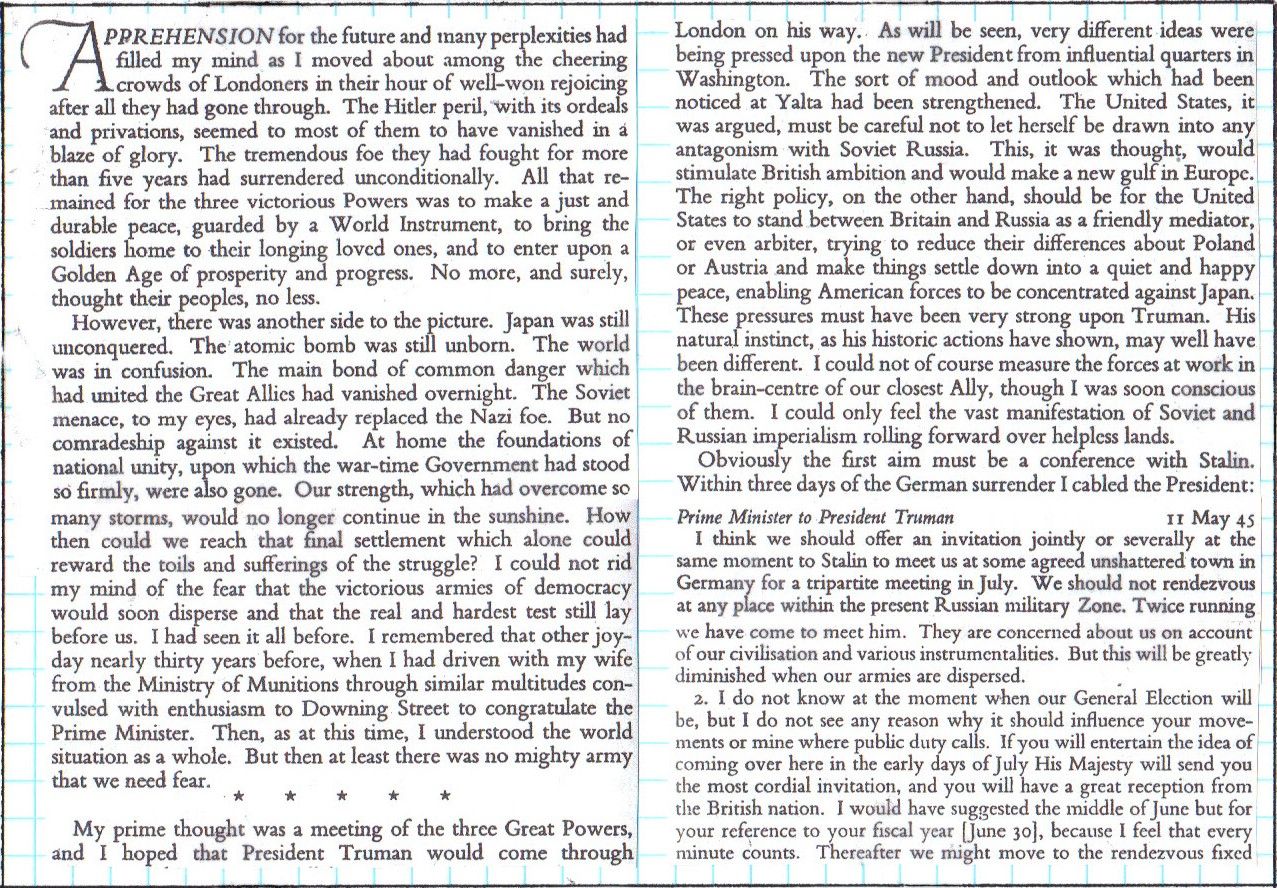
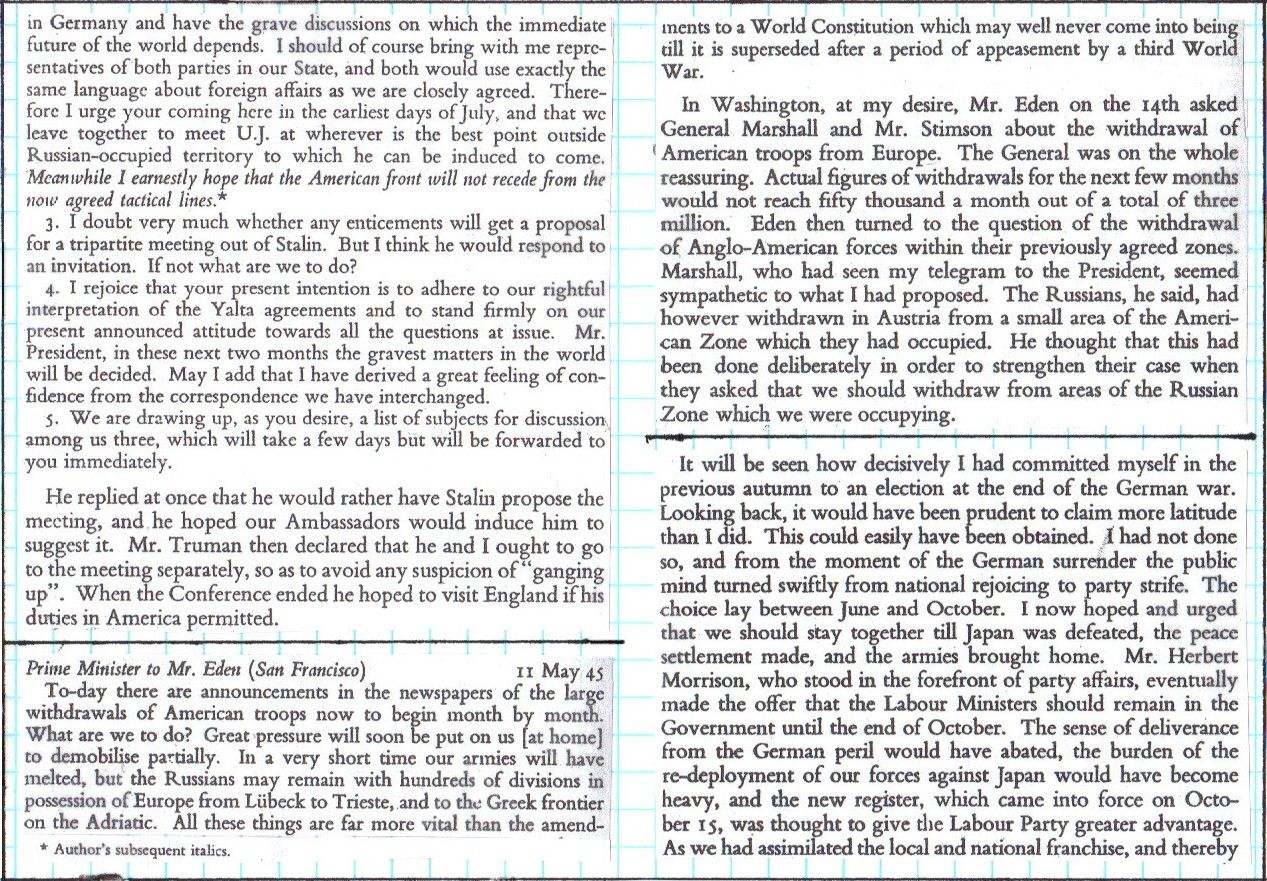

Winston S. Churchill, Triumph and Tragedy
http://www.etherit.co.uk/month/4/11.htm
May 11th, 1945 (FRIDAY)
UNITED KINGDOM:
Frigate HMCS Thetford Mines arrived Lough Foyle escorting 8 surrendered U-boats.
Corvettes HMCS Leaside and Edmunston and frigate HMCS Poundmaker departed Londonderry escorting Convoy ONS-50.
AUSTRIA: Hitler’s special train is captured by Allied forces at Saalfelden. Five days before the SS had destroyed part of the train, Hitler’s personal saloon car. The adjacent saloon car was the communication saloon car. (Bruno Rebbelmund)
CZECHOSLOVAKIA: German Army Group Centre is in a pocket east of Prague. The last remnants today surrender.
AEGEAN SEA: German forces on the islands surrender.
COMMONWEALTH OF THE PHILIPPINES: Coast Guard-manned Army vessel FS-255 was anchored in 17 fathoms of water, 1000 yards, 140 degrees from the pier at the head of Taloma Bay, Davao Gulf, Mindanao, Philippines. Both #1 and #2 hatches were open and about 80 tons of ammunition were still on board. The ship was dark and the quartermaster on watch was on the bridge and the security watch on #2 hatch, the engineer on watch in the engine room. It was rainy and the weather was thick when at 0030 on 11 May 1945 she was struck by a torpedo on her port quarter in the after crew’s compartment. The commanding officer, LT George A. Tardif, USCG, was in his berth at the time, but immediately went on deck with a battle light to ascertain the cause of the explosion and extent of damage. He found that the torpedo had hit her on the port quarter, ordered all hands checked and a search for injured men. Three injured men were found -SC3 Frank Ness, YN1 Edward P. ConIiffe, and NM1 William Brown. The commanding officer went inside the ship and looked down into the engine room. The engineer on watch was already on deck. The main engines were nearly flooded and water was pouring into the engine rooms from the bulkhead aft which was badly ruptured. The officer’s wardroom, galley and mess ball aft were literally torn to pieces and it was impossible to proceed further forward or aft. On the boat deck the lifeboat had its stern blown off and blasted out of the cradle and the gig had the stern blown open and the propeller and shaft bent double, was blown out of the cradle and hanging over the side by the forward falls. The 140 mm gun had been blown off and one ready ammunition box belonging to it was found on the forecastle head near the anchor winch, with 140 mm shells about forward of #1 hatch. The ship had buckled between #2 hatch and the bridge structure with foot high ridges in the deck plating, extending down the sides of the ship into the water. Examination of the crews quarters indicated that MoMM 2/c Lewis Cohen and Steward Theodore R. Strong who were sleeping in the crew’s quarters aft were nowhere to be seen. MoMM 1/c Robert Swett and SC 1/c Richard E. Hoetger who were sleeping in hammocks on the fantail beneath the 140 mm gun platform were also not found. Large masses of blood were seen on the deck which had been blown to a 90 degree angle. The signalman on LCI-21 was signalled that the FS-255 had been hit. The ship was settling fast and two life rafts were launched and men ordered to board them which ware ordered to stand off clear of the ship. Three minutes later the FS-255 turned over on her port side and sank at 0050. The LCI-21 picked up all survivors ten minutes later. Out of a total enlisted complement of 20, 16 survived. All four officers also survived.
JAPAN: US forces attacks increase on the Shuri Line on Okinawa. They also launch a fresh offensive aimed at the capital, Naha.
Boeing B-29 Superfortresses of the USAAF’s Twentieth Air Force fly six missions to Japan.
Missions 167 to 171: Fifty B-29s attack airfields at Oita, Saeki, Nittagahara, Miyazaki, and Miyakonojo on Kyushu Island; eight others hit targets of opportunity. Missions against Japanese airfields terminate the air campaign, begun on 17 April, during which the Twentieth Air Force has devoted a major effort toward hitting sources of Kamikaze raids against USN and USMC forces in the Battle of Okinawa.
Mission 172: 92 B-29s bomb the Kawanishi aircraft plant at Kobe; one other hits a target of opportunity; they claim nine Japanese fighters; one B-29 is lost.
Off Okinawa, two kamikazes crash into the Task Force 58 flagship, the aircraft carrier USS Bunker Hill (CV-17) with Carrier Air Group Eighty Four (CVG-84) aboard. Kamikazes also damage the destroyer USS Evans (DD-552) and a large support landing craft (LCS) and a “Baka” rocket-powered glide bomb damages the destroyer USS Hugh W. Hadley (DD-774). At 7.45 a.m., the first Japanese plane was sighted, heading directly for the ship. In the ensuing hour and thirty-five minutes, the action was nonstop. The first plane was shot down at a range of 1,200 yards. Ten minutes later, at 7.55 a.m., radar picked up a mass of 156 enemy planes approaching at various altitudes, in groups of 36, 50, 20, 30 and 20, all headed toward the Hadley and her sister ship, the USS Evans. Marine Corsair fighters formed a protective cover above the ships. The Corsairs attacked first, and reported shooting down 12 Japanese planes.
The Corsairs attacked first and reported shooting down 12 Japanese planes, but at 9 a.m. the Evans was hit and put out of action.
From then on, the Hadley fought alone, the target of relentless assault from groups of four to six enemy aircraft homing in from both sides. When the Marine pilots ran out of ammunition, they followed the kamikazes directly into the Hadley’s guns, dropping down on top of them in an effort to force them into the water short of their target.
At 9:20 a.m., 10 Japanese kamikazes circled the Hadley — four off the starboard bow, four off the port bow, and two astern — then attacked simultaneously. In the seconds that followed, all 10 planes were destroyed.
But three crashed into the ship.
One of them struck below the waterline, immediately killing the sailors below and opening a huge hole in the ship’s side. Another hit the ship aft, plunged through the deck and detonated the ammunition stored there. The last hit the mast just above where my father sat, helpless, in a bubble directing antiaircraft fire.
By this time, the ship, aflame and listing precariously, was in grave danger of capsizing. The order to prepare to abandon ship was given, but a courageous band of about 50 crew members, officers and enlisted men alike, some in bare feet on a red-hot deck, stayed on board and extinguished the fire.
Somehow the Hadley managed to stay afloat. It was towed back to the States and decommissioned on Dec. 15, 1945.
In those terrifying 95 minutes, the Hadley shot down 23 enemy planes, more than any ship in any one engagement in Navy history, before or since. It also sustained the impact of three kamikazes and two bombs.
Thirty-one members of its crew perished, and 116 others, including my father, were wounded. After the battle, the ship was awarded a Presidential Unit Citation.
The ship as Radar Picket Station #15 fired 801 rounds of 5” 38 CAL, 8,950 rounds 40MM & 5,990 rounds 20mm. (Mike Lenox)
On the USS Bunker Hill, the first kamikaze releases its 500 pound (227 kg) bomb which smashes through the flight deck and out the side, exploding just above the water, and the aircraft crashes into the flight deck and skids over the side, destroying nearly all the ready-deck aircraft. The second kamikaze dives at the carrier at nearly a vertical dive, dropping its 500 pound (227 kg) bomb just before it hits the deck.
The bomb smashes through the flight deck, but does not make it through the hangar deck where it explodes. The thickened armour protecting the machinery spaces below has proved effective. After several hours of fighting fires, the ship is able to sail under her own power and returns to Bremerton, Washington via Pearl Harbor for repairs. A total of 346 men lose their lives, 43 are counted missing and 264 have been wounded, many with severe burns. Many of the ship’s pilots died either in their planes or inside the skin of the ship when the second bomb exploded.
Pictures of the Bunker Hill.
An extract from Jim Verdolini’s diary, on the USS RANDOLPH:
May 11, 1945: Back at Okinawa. Clear beautiful weather. Too clear!
At 1000 a whole swarm of kamikazes hit the Task Group. I saw the Bunker Hill, on our starboard side, hit by two of them . We can hear the explosions on her. Burning bad. We circle her, and throw life rafts in the water. many men in the water. We hear she lost about 391 men. A swarm of planes attack, ships firing at them. See one fall, and the rest leave. We are back to having 7 of the 11 CV’s.
Admiral Mitscher leaves Bunker Hill and the Enterprise becomes the Flag ship.
Glen Boren’s Diary on the USS BUNKER HILL
11 May 1945
USS BUNKER HILL
Flag Ship, Vice Admiral Marc “Pete” Mitscher
On May 11, the Bunker Hill had been at sea for 59 consecutive days. At 0200 that morning, as usual, enemy planes were reported and everyone went to general quarters. GQ lasted for an hour. “Condition One Easy” was set, which left the anti-aircraft gunners on partial elert. There were further GQs at dawn and at 0900.
At 1002 when a group of fighters were returning to the BUNKER HILL, Central Information center reported that enemy planes had returned with the ship’s own planes. CIC said, however, that it could not positively identify the planes as enemy. They were. At 1004, Major James Sweet, Marine flier, frantically signalled from his fighter: “Alert! Alert! Two planes diving on the BUNKER HILL!”
Almost immediately, a Japanese Zeke sneaked in fast and low on the starboard quarter and dropped a 500-pound delayed action bomb and then dived into the 34 planes parked forward on the flight deck. The crashing plane started fires among the fueled and armed planes on the flight deck, and as its gas tank exploded, it left a searing trail, skidded along the deck and over the side. The bomb went through thr flight deck and out through the side of the ship and exploded above water.
After the first strike, seconds later, a Judy single engine divebomber whipped in at full throttle, made a steep climbing turn and then dove directly for the BUNKER HILL. Gunners caught the Judy with five-inch shell and 40 MM anti-aircraft fire but the suicide-pilot kept coming and dropped another 500-pound bomb which penetrated the after-flight deck and exploded in the galley deck immediately below.
Scores of crew members were blown into the water and flames leaped up all over the deck. As the confusion mounted, still a third kamikaze came tearing in for an attact. But the BUNKER HILL’s Anti-aircraft gunners stayed at their posts and shot the attacker down into the sea.
To shorten the story, 373 of the BUNKER HILL’s crew were killed or died of wounds, another 43 were missing and 264 wounded. Most of the ship’s fighting squadron, qwqiting in their ready room were killed. Hundreds were blown over the side or forced to jump to escape the flames.
Admiral Mitscher transferred the flag to the ENTERPRISE.
This info from “The BUNKER HILL Story” by Irv Udoff.
I was not aboard at this time.
Glen Boren
A comprehensive USS Bunker Hill website:
http://www.navsource.org/archives/02/17.htm
Photo of VMF-451 on the USS Bunker Hill:
http://www.kithobbyist.com/warlords/F4U-1D.htm
Photo of the disaster of May 1lth, 1945:
http://www.chinfo.navy.mil/navpalib/ships/carriers/histories/cv17-bunkerhill/cv17-bunkerhill.html
(Russ Folsom)
BONIN ISLANDS: Iwo Jima: The USAAF 306th Fighter Group arrives on the island.
NEW GUINEA: Australian troops of the veteran 6th Division today attacked Wewak, where they seized the area occupied by the headquarters of the Japanese 18th Army. The attack was the culmination of six months’ arduous campaigning in steamy jungle country after the Australian Army had taken on responsibility for the continued neutralization of the Japanese forces left stranded by MacArthur’s leap-frogging advances.
The enemy garrisons including those in New Britain and the Solomons totalled in excess of 150,000 with the greatest concentration around Rabaul, in New Britain. American policy had been to allow bypassed Japanese to “wither on the vine”, but the Australians set out to “destroy the enemy where it could be done with light casualties.”
Even so the resulting loss of life among the Australians is now being regarded by many as too high a price to pay.
U.S.A.: Destroyer USS Hanson commissioned.
ATLANTIC OCEAN: U-873 surrenders at sea to the USS Vance. (Russell Folsom) More...
Again, to put things in perspective, the Soviets murdered about 3 times as many people as did the Nazis. And the two were ALLIES before Hitler turned on them.
And the fight goes on...Field Marshal Schorner’s Army Group South (or what’s left of it) continues to resist the Soviets in Bohemia and the Czech lands, hoping to get west to surrender to the Americans. The Germans really didn’t want to go into Soviet captivity. While the German OKW hasn’t had contact with Schorner since May 2, a liason officer did make it through to him on either May 8 or 9 to convey the news of the general surrender. Schorner is reported to have said he did pass the order along, but could not guarantee it would be obeyed. There is more than a hint of duplicity in the account.
As for Schorner, his tale became one long string of “good news bad/news.” Good news: He saved his own hide by changing into civilian clothes and hopped into an experimental helicopter or Fiesler Storch, deserting his troops who were being rounded up by the Soviets. Bad News: his aircraft crashed in Austria. Good News: He survived the crash, and was captured by the Americans, as he wished. Bad News: The Americans turned him over to the Soviets, who tried him for war crimes and sentenced him to 25 years hard labor. Good News: Chancellor Adenauer secured his release in 1955 along with the other POWs held by the USSR. Bad News: When he got back to Germany, he was tried in a West German Court. His crime? Ordering the execution of German soldiers who were suspected of desertion or cowardice (which is exactly what he wound up doing). Good news: Due to health reasons, his sentence was commuted in 1961. Bad News: they stripped him of his pension. Good news: He had a portion of it restored. Bad News: he lived the rest of his life in poverty and shame, having been one of the few officers tried by the Courts of Germany and her opponents. Good News: He was the last surviving German Field Marshal, having outlived von Manstein by 23 days, and none have been created since. Bad News: The rightful verdict of history is that he was a dirtbag.
I’m cringing as I read about de-mobilization and industrial reconversion. I get the strange sense that at this point the United States is in some sort of foggy gray area between being at war and not being at war. Yes, we have defeated Nazi Germany, but Japan is still defiant. And we are demobilizing the army while we haven’t yet invaded the Home Islands.
It looks like we learned nothing from the time between Normandy and the Battle of the Bulge, when we scaled back munition production because we thought the war in Europe was over. The result was a shell shortage for our most effective ground combat arm.
Anyone who thinks about “could we have beaten the Red Army” needs to read the “Priorities in Army” article. Forget any notion you have about whether we could defeat the Red Army; we weren’t even willing to fight the Japanese, with whom we were still at war. And I also wonder if the Japanese are reading this article, and are seriously thinking they just have to hold on a little longer, extract a little more blood from us, and we will quit.
LOL funny! Well done: good news/bad news.
IIRC, at this time the Army only had plans to send First Army to the Pacific to participate in Coronet.
Still, the plan is structurally flawed in that it favors demobilizing the most experienced troops and individual troops and not units. So, units will lose their most experienced men who will be replaced with less experienced men or green trainees.
The effect on the army was exactly what you said. I’m guessing the Japanese leadership would realize it. The timing of this announcement was motivated entirely by domestic political concerns and not by military logic. It could not have come at a worse time.
The Japanese strategy all along was to dig in and hold on until the Americans wore out and quit. For a people who did not confront hard realities in their strategic thought, but used more wishful thinking, this had to be the best news they’d seen in a while.
Short of some game changing event, a truly “new thing” in the world, the Japanese aren’t going to quit now that they believe they’ve stared down the Americans and the Americans have blinked.
Uboat black surrender flag?
I thought surrender flags were white. Anyone explain?
The marine pilot deliberately wasted his ammo to reduce weight so he could catch up to the Nick. What was he thinking?
For whatever reason, the agreed upon surrender signal for U-boats was a black flag. Don’t know why.
The way the end of the Pacific war is being planned does lead to the conclusion we probably need a "new thing" to finish the job.
I use the term “new thing” in quotes, having taken it from Alexander Werth’s “Russia at War.” It was exactly what the Russians called it, and realized what it was. I can expound on it later, because even though Stalin knew about it, the average Russian did not. But he caught on very quickly.
There actually was a book about the U-Boat surrender aptly named: Black Flag: The Surrender of Germany’s U-Boat Forces Hardcover – October 29, 2009, by Lawrence Paterson (Author)
Other references to using a black flag.
The Anarchist black flag has been an anarchist symbol since the 1880s. Anarchists use either a plain black flag or a black flag with an “A” and an “O” around it, this symbol is a reference to a Proudhon quote, meaning anarchy is the mother of order[citation needed] .
The color black was famous as the flag of Italy’s National Fascist Party, designed after the party’s paramilitary Blackshirts.
The color was also chosen by leftist Nazi activist Otto Strasser in his creation of the counter-Nazi party; the Black Front.
Upon the surrender of Nazi Germany in World War II German U-boats were ordered to fly a black flag and sail to an Allied port and surrender.
SPECIAL ORDERS BY THE SUPREME COMMANDER, ALLIED EXPEDITIONARY FORCE TO THE GERMAN HIGH COMMAND RELATING TO NAVAL FORCES ordered U-Boats to Fly a large black or blue flag by day.
Apparently the Japanse did the same thing
Black Surrender FlagI-400 flying the black flag of surrender
http://www.pbs.org/wnet/secrets/japanese-supersub-image-gallery/552/
It is raining kamikazes on TF 58.
Disclaimer: Opinions posted on Free Republic are those of the individual posters and do not necessarily represent the opinion of Free Republic or its management. All materials posted herein are protected by copyright law and the exemption for fair use of copyrighted works.